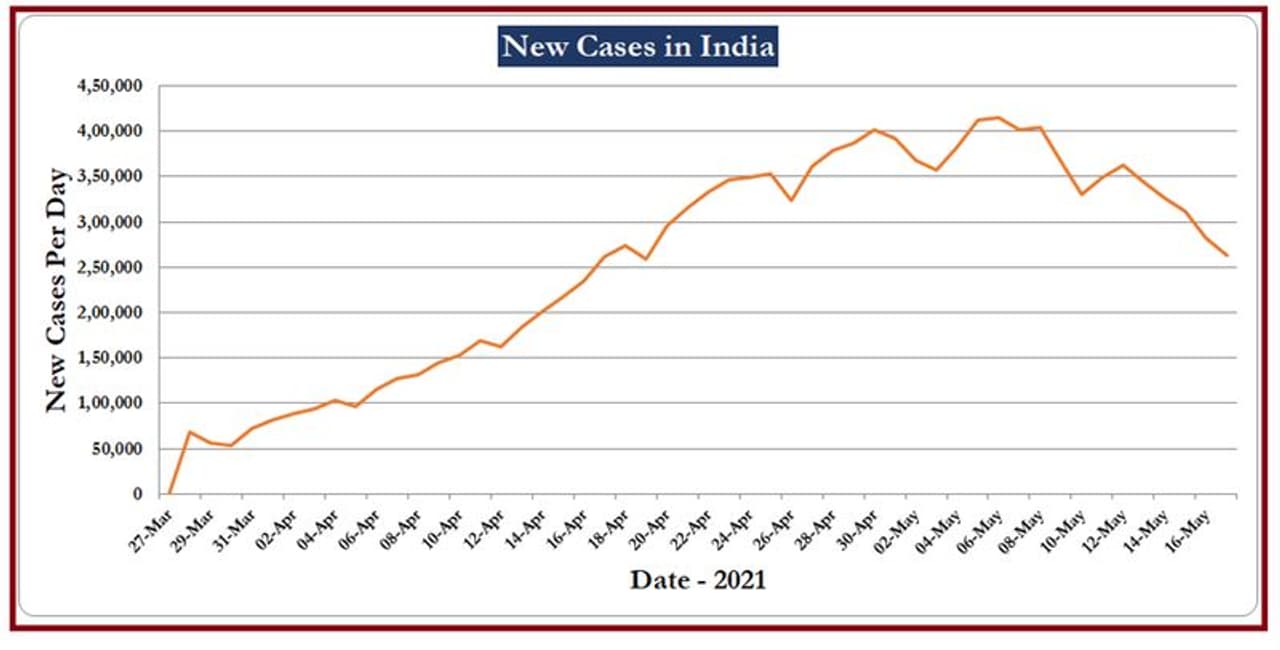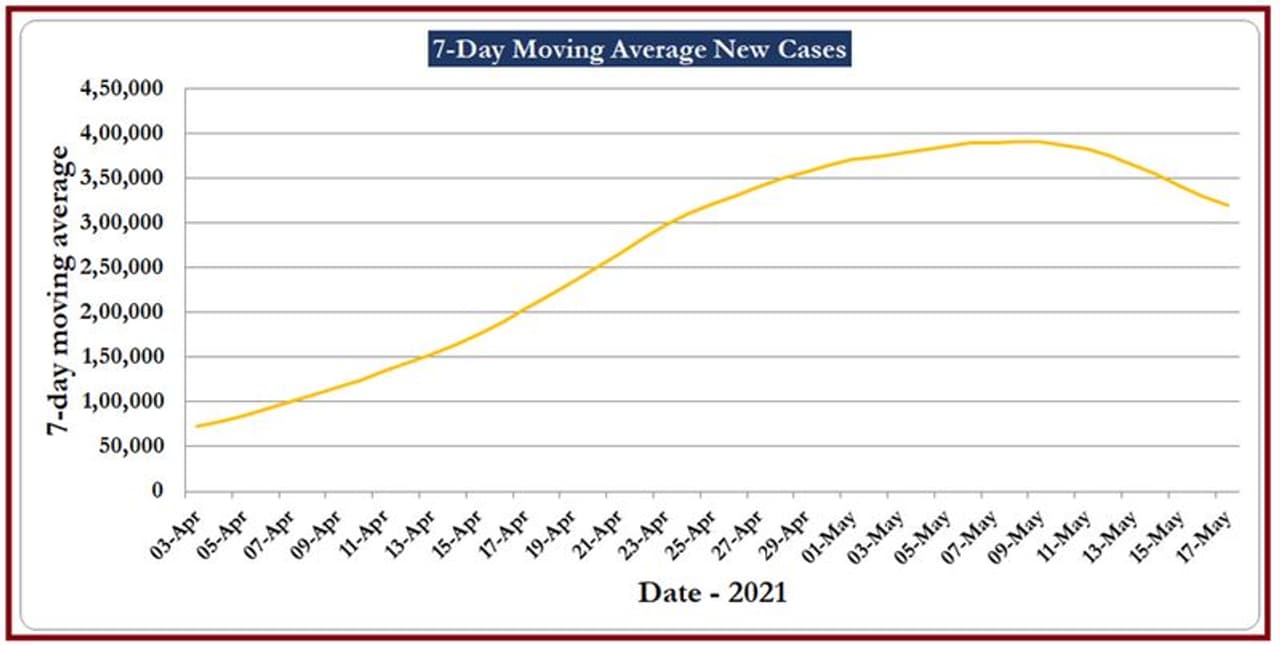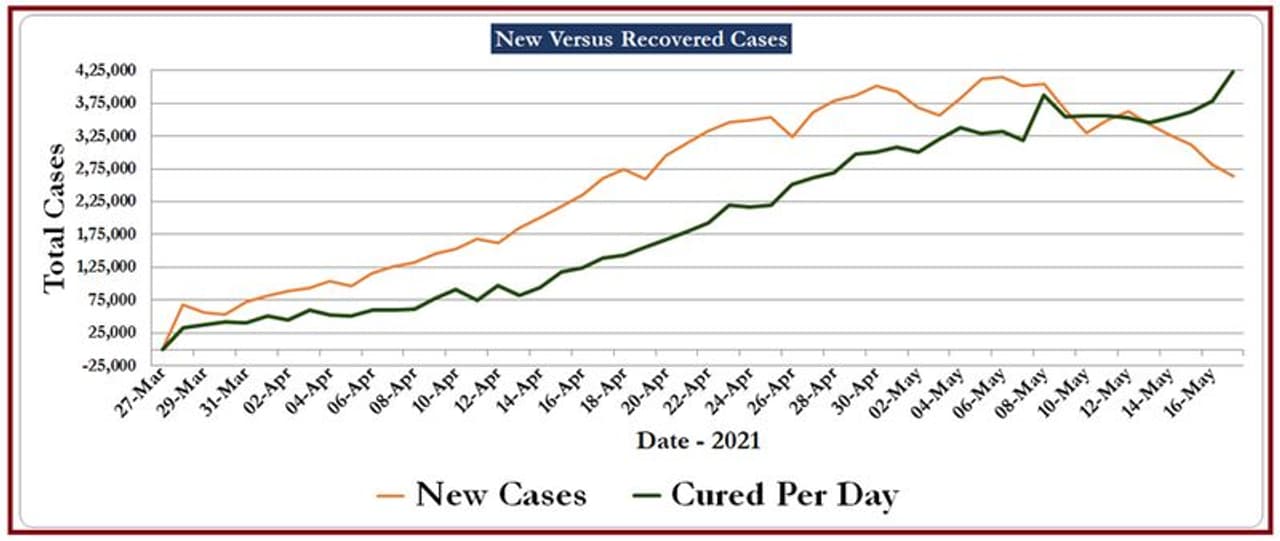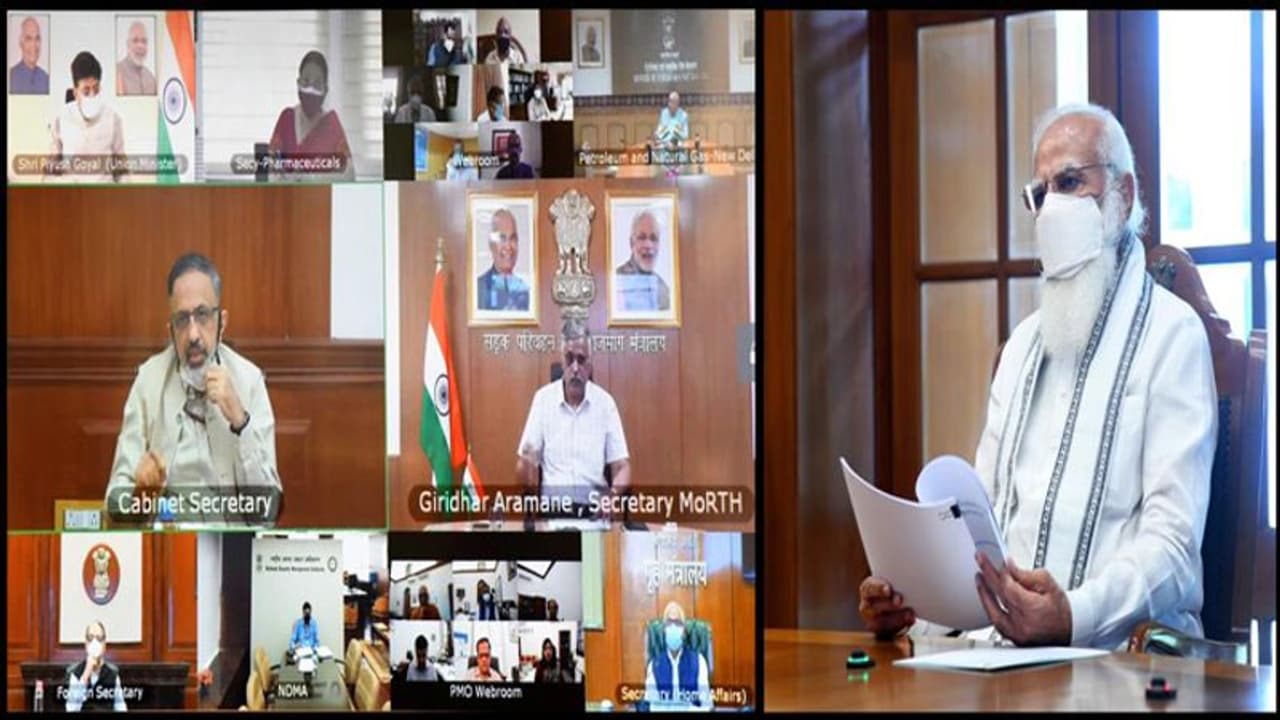With India reeling under the deadly second wave of COVID-19 pandemic, the government has taken 11 steps to fight the disease as Akhilesh Mishra delves into it in detail.
After some harrowing weeks, a glimmer of hope maybe finally emerging in India’s war against the second wave of the COVID-19 pandemic. The graph of daily new cases (Graph 01) as well as the more reliable graph of seven-day moving average of new cases (Graph 02) is now showing a sustained dip. The new cases versus recoveries graph (Graph 03) is also now in the green with daily recoveries now overshooting the new cases.


Graph 01 – New Cases Per Day

Graph 02 – Seven Day Moving average of cases

Graph 03 – Recoveries vs. New Cases
An important question, that has especially raged in the international media, is what has the response of the Government of India been in tackling the pandemic? The response can be summarized in eleven brackets.
1. Vaccination
Task Force on Corona Vaccine and other Science and Technology Issues was constituted as early as constituted on April 14, 2020. Within just 9 months, the roll-out of COVID-19 vaccine started across the country on Jan 16, 2021.
The current production capacity of indigenously developed Covaxin vaccine is slated to be doubled by May-June 2021 and then increased nearly 6-7-fold by July-August 2021 i.e increasing the production from 10 million vaccine doses in April 2021 to 60-70 million vaccine dose/month in July – August. It is expected to reach nearly 100 million doses per month by Sep 2021.
Combined with other approved vaccines like Covishield and Sputnik and those in pipeline like Zydus Cadila, BioE, Novovax and a few others, the central government has a firm pipeline of 2.16 billion dose before the end of the year.
From May 1, all Indians above 18 years of age are now eligible for vaccination. So far, more than 185 million people have been vaccinated across India, at the fastest pace in the word.
2. Oxygen Availability
Think of the scale of the challenge in this way. Before the second wave, the daily medical oxygen demand of India was around 900 MT/day. Within days it shot up to 9,000 MT/day. A few days were indeed very painful. But significant action has been taken to address the situation.
Now that production issues have been managed, and although transportation logistics is within the domain of states, yet all central ministries have been mobilized to pool in their resources. For example, Oil and Gas PSUs under the Ministry of Petroleum and Natural Gas are specifically working to find transportation solutions for Liquid Oxygen.
Currently, there are 12 tankers and 20 ISO containers with the capacity of 650 MT. The figure is going to improve substantively, with the numbers likely to go up to 26 tankers and 117 ISO containers by the end of this month, with the capacity of 2314 MT. Overall, the capacity of oxygen tankers was 12,480 MT in March and their number was 1040. Now, the capacity of tankers has gone up to 23,056 MT and their number has increased to 1681. Availability of medical oxygen cylinders has increased from 435,000 in March 2020 to 1.12 million on May 21.
Additionally, liquid oxygen has also been imported from abroad, 3,500 MT will be delivered over 3 months. In addition, 2285 MT of LMO has been imported from UAE, Bahrain, Kuwait and France, a part of which has already arrived.
3. Drugs, Pharmaceuticals, PPE, N-95 Masks, Ventilators
Production of Remdesivir has gone up from 3.7 million 12 April 2021 to 10.1 million on 4th May 2021. The number of plants producing Remdesivir has also gone up from 20 on 12 April 2021 to 57 on 4 May 2021. Additional thousands of Tocilizumab have been procured and issued across the country.
The Drug Regulator has approved a new anti-COVID drug developed by DRDO for emergency use. This drug has shown tremendous promise in curing COVID and drastically reducing need for hospitalization.
16.19 million PPE Kits and 41 million N-95 masks have also been supplied to the States for their front-line workers. 38,103 new ventilators, through standard route, have also been supplied to the states.
4. Testing Infrastructure
Approximately 2,463 testing facilities with a combined daily testing capacity of 1.5 million are functioning now as compared to just a single laboratory in January 2020. In addition, from a stage of no indigenous manufacturers of COVID lab diagnostics or testing machines, presently an indigenous production capacity exists of more than 1 million kits/day.
5. Hospitals and Care Facilities
Total 1.86 million beds, including the 4,68,974 beds in the Dedicated COVID Hospitals, exists as of today. Just before lockdown last year, there were just 10,180 isolation beds.
Similar capacity augmentation has been done for ICU beds, with increase from just 2,168 before lockdown to now over 92,000.
Covid Care Railway Coaches as Isolation Units are now functional in 17 diverse locations in 7 states spread over the country. 70,000 isolation beds made available by Railways in more than 4,400 Covid Care Coaches
6. Support to Citizens
About 3 billion dollars has already transferred directly into Punjab farmers’ account against sale of their Wheat crop. For the First Time, Farmers of Punjab have received payments directly into their bank accounts
Over 100,000 MT of food grains has been distributed to over 20 million beneficiaries in 12 States in the first 10 days itself of the scheme under Pradhan Mantri Garib Kalyan Anna Yojana. This scheme is an extension of the same scheme floated last year in the first wave in which almost 80 million people benefitted.
7. Delivery of Global Aid
As of May 11, 8,900 Oxygen Concentrators, 5,043 Oxygen Cylinders, 18 Oxygen Generation Plants, 5,698 ventilators/ Bi PAP and more than 340,000 lakh Remdesivir vials were received as part of global aid to India and have been delivered/ dispatched to States and UTs.
8. Financial Support to States & Local Governments
Centre has released 1.5 billion dollars to Panchayats in 25 States as untied grants. Maximum number of days of overdraft in a quarter for state governments has been increased from 36 to 50 days in view of the pandemic emergency.
Central government has also decided to provide an additional amount of up to 2 billion dollars to States as interest free 50-year loan for spending on capital projects.
9. Financial Steps to Improve Access to Emergency Medical Services
Term Liquidity Facility of almost 8 billion dollars set up with tenure of up to 3 years, at repo rate, to ease access to emergency health services, for ramping up COVID-related health infrastructure and services.
For the MSME and other unorganized sector entities a total of 2.5 billion dollars has been set aside, with a limit of almost 15,000 dollars available to per borrower. These loans would be available at nominal interest rates and will majorly help in keeping the economic activity going.
10. PM-CARES Fund Disbursal
Utilizing PM CARES find, more than 1,200 medical oxygen generating plants have been sanctioned, in addition to those already installed. This will ensure every district of the country has at least one dedicated plant. Simultaneously, 150,000 lakh Oxygen Concentrators have been purchased using the same fund to augment capacity.
PM CARES fund has also been utilized to procure and deploy 50,000 ‘Made in India’ ventilators.
Almost 150 million dollars from PM CARES Fund has been mobilized for migrant relief.
The PM CARES will also be used for procurement of 66 million doses of vaccines for COVID-19 under Phase-I for the Healthcare Workers and other Frontline Workers. This was apart from money sanctioned as a helping hand to catalyze vaccine development.
11. Leading from the front – Review meetings
Prime Minister Narendra Modi himself has been leading the mobilization of the decision makers at all levels to keep the government machinery in top gear. He has addressed the nation 10 times so far, held multiple rounds of meetings with Chief Ministers – during the first wave, before the second wave even started and during the second wave. Modi has been personally interacting with oxygen manufacturers, drug makers, nitrogen plant owners (to transition them to oxygen manufacturing), top medical professionals, the Armed Forces to mobilize them for relief, vaccine manufacturers and a host of other stakeholders.
Just yesterday, on May 18, Modi held a meeting with the District Collectors – the field commanders in a way - to hear from them first hand as to what is happening in the villages.
The entire government machinery, the cabinet, the secretaries and the empowered groups are similarly mobilized.
India has waged a difficult, and at times, a painful battle against the pandemic. But the front-line workers, the health professionals in particular and the people in general are waging a heroic battle. It is this collective will of the people that shall soon bear results.
Akhilesh Mishra is CEO of Bluekraft Digital Foundation, a New Delhi-based Public Policy Think Tank. Earlier, he was Director (content) of the MyGov portal. Views expressed are personal.
NOTE: Asianet News humbly requests everyone to wear masks, sanitize, maintain social distancing and get vaccinated as soon as eligible. Together we can and will break the chain #ANCares #IndiaFightsCorona
